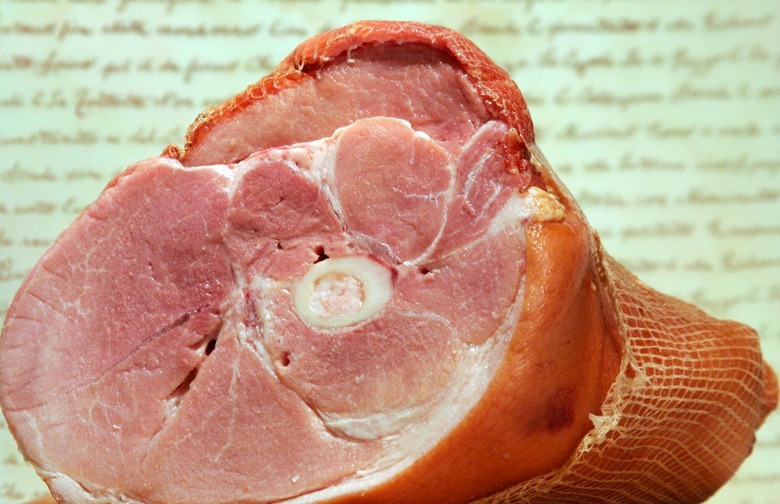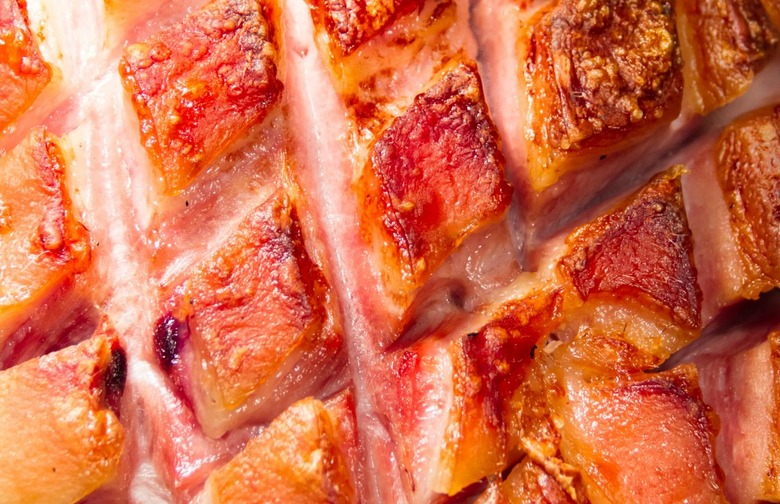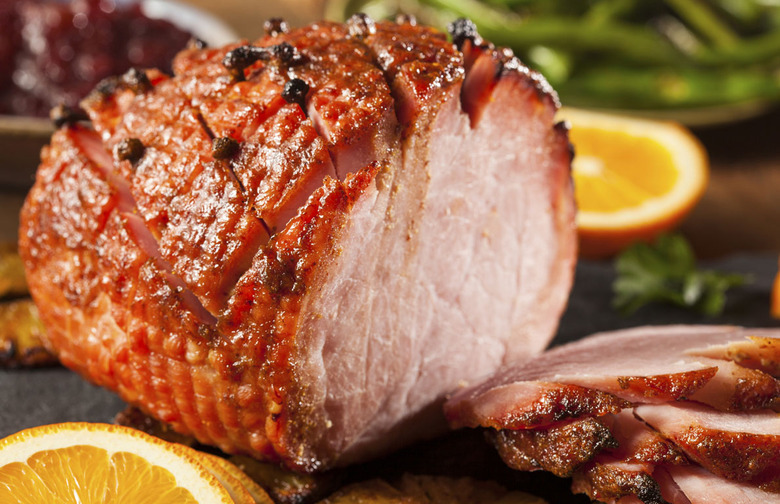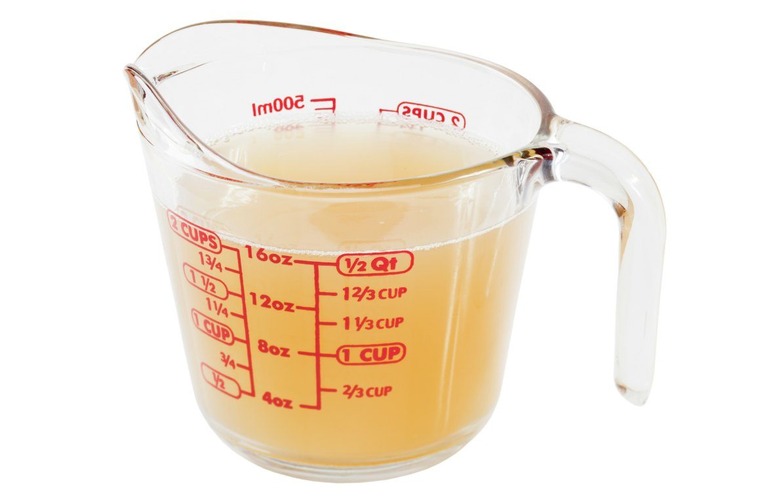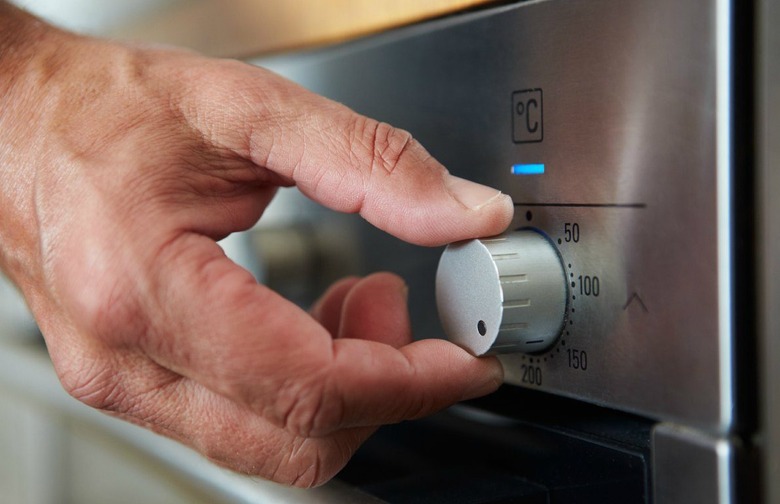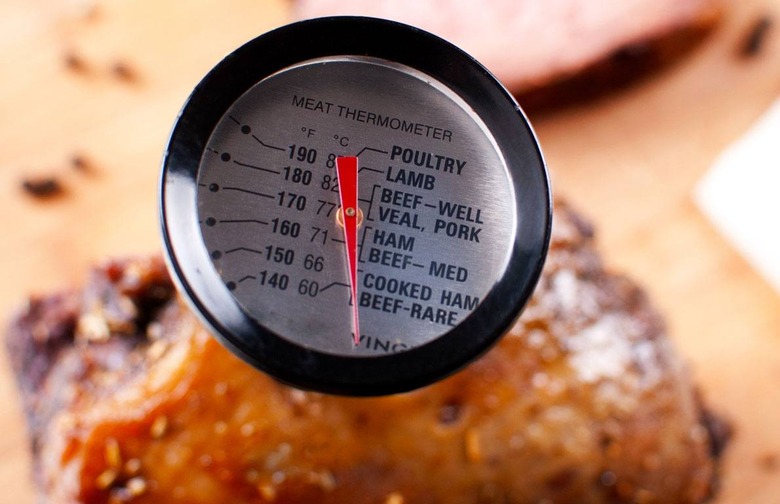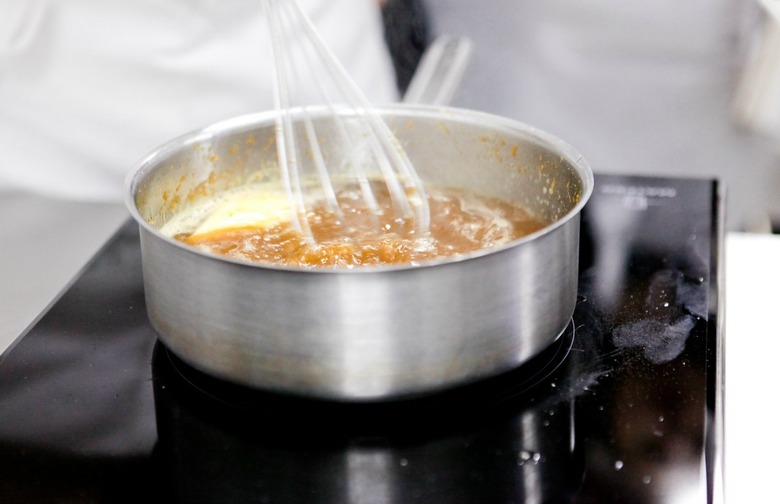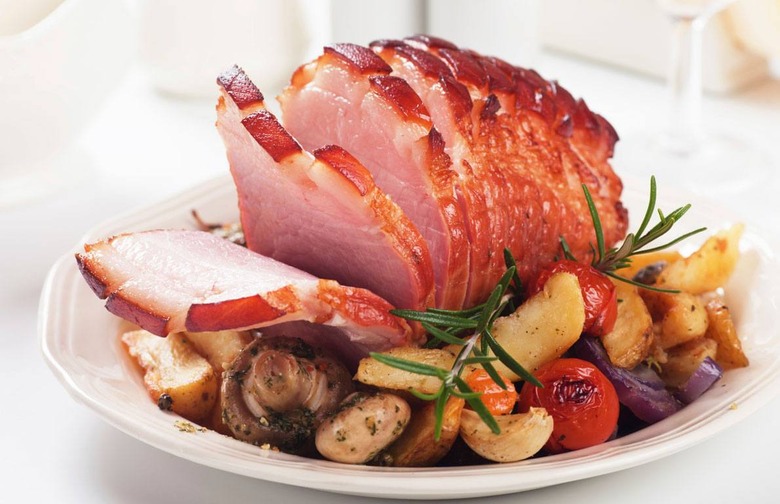How To Make The Perfect Easter Ham
Know how to choose, cook, glaze, and serve the perfect Easter ham with these easy tips.
Choose the Right Ham
Easter is a special occasion, and if you want to make a special meal you should start with a special ham. If you can, order a nice smoky, bone-in ham from your local butcher. The ham will have more flavor and a better texture. Otherwise, look for a ham that's labeled "in natural juices" instead of "water added" at the supermarket (for the best flavor) and avoid spiral-cut hams that can easily dry out during cooking.
Score the Fat
There should be a nice layer of fat on the outside of your ham; start by scoring it. Take a sharp knife and cut a diamond pattern along the top layer. The lines should be approximately one to two inches apart (depending upon the size of the ham) and the cuts shouldn't penetrate the meat.
Add Some Spice
For a beautiful (and traditional) presentation, stick one whole clove into the center of each of the diamonds you've created on the surface of the fat. This will add a subtle spice to the finished ham.
Warm the Ham in Liquid
Be sure to add liquid — whether it's water, stock, or wine — to the bottom of your roasting pan and then cover the ham with foil. You don't need a ton of liquid; just enough to gently steam the ham as it warms. This will prevent the ham from drying out.
Low and Slow Cooking
Since most hams are pre-cooked, you're really just warming them. Keep the temperature of your oven low (300 to 325 degrees F works well) and let the ham warm slowly so that it stays moist and juicy.
Use a Thermometer
Make sure you keep an eye on the internal temperature of your ham; there's no need to exceed the recommended 145 degrees F. If you let the ham get hotter than that, you run the risk of serving a dry and overcooked roast. Be sure to take the temperature near the bone and to remove the ham from the oven when it reaches 140 degrees F (since it will continue cooking for a few minutes while it's resting).
Make Your Own Glaze
If your ham comes with a glaze packet, toss it; you can quickly and easily make your own more delicious version from scratch. Just mix a big scoop of brown sugar with a drizzle of honey and a small spoonful each of Dijon mustard and fruit juice. Heat the four ingredients in a small saucepan just until the sugar is melted and they're fully combined. Remove the pan from the heat and then set the glaze aside until you're ready to use it.
Know When to Glaze
When the ham is almost done cooking, remove the foil and spoon the glaze on top. Increase the oven temperature to 400 degrees F (so that you'll get a nice crust on the outside of the ham) and give the glaze about 15 minutes to thicken and caramelize. Don't leave the glazed ham in the oven for more than 30 minutes or the glaze can start to burn.
Rest the Ham Before You Carve
As with any other roast, be sure to let the ham sit for a few minutes before carving it; this will allow the juices to redistribute themselves throughout the meat. Give your Easter ham 15 to 20 minutes of rest before you serve it.

